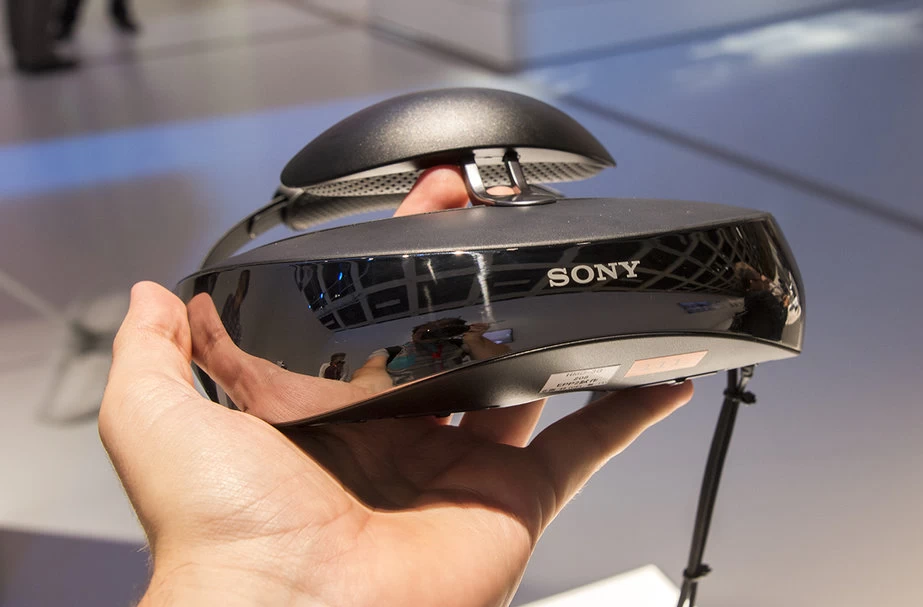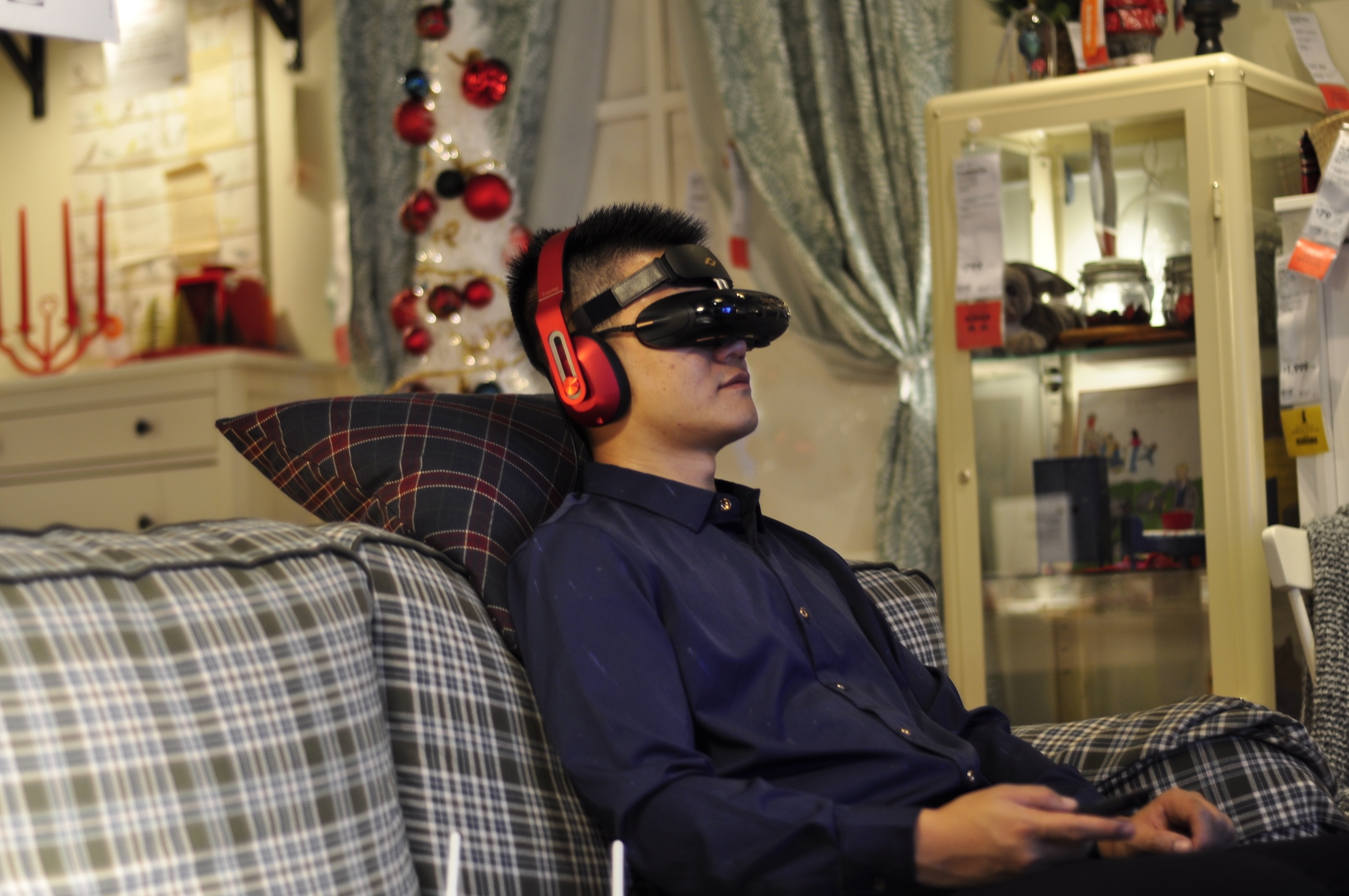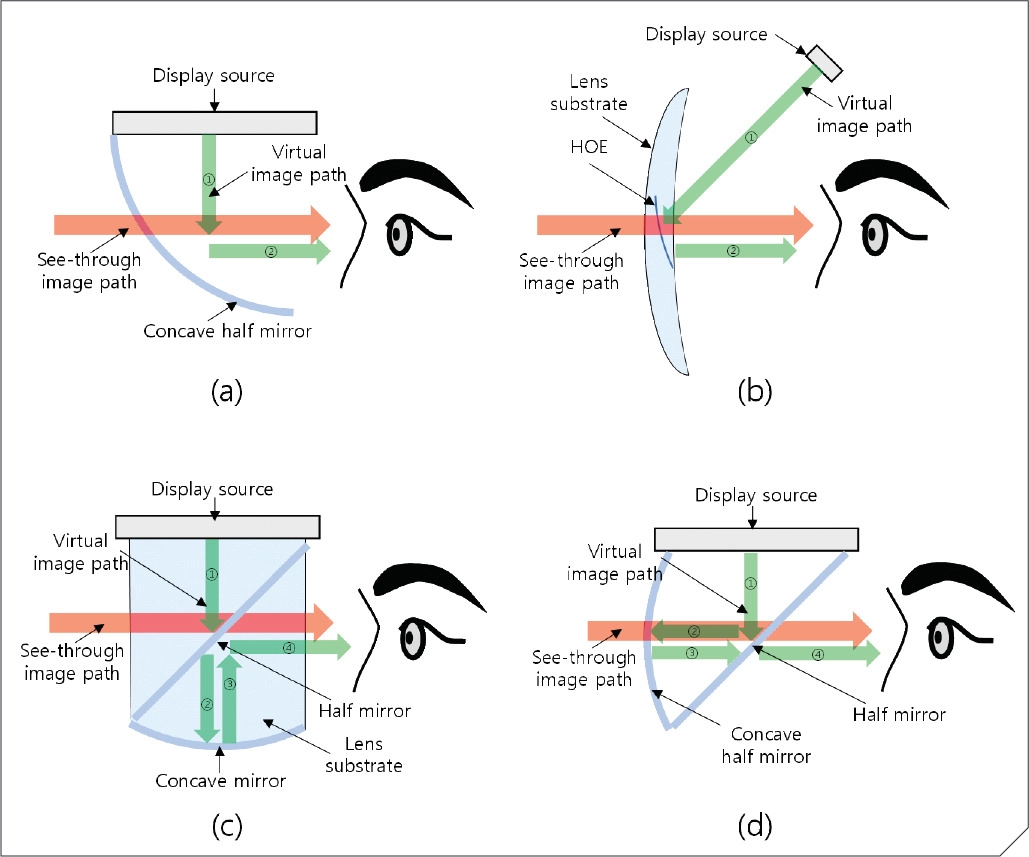“It’s good to watch movies on this bed.” At the Electronic Information Expo not long ago, an audience of a smart glasses booth had experienced the new products on display and commented on their feelings to Geek Park.

AR Smart Glasses Like Sunglasses | Thunderbird Technology
2022 can be said to be the first year of consumer-grade AR glasses, and a number of domestic AR companies have begun to test the waters of the consumer-grade market. In the past two months, AR startups Rokid and Nreal have successively released a new generation of consumer-grade AR glasses. Thunderbird Technology, a subsidiary of TCL, has also joined the track and launched the first smart glasses, Thunderbird AIR.
The ToB market has been struggling for several years, and AR glasses, which have high hopes for “next-generation smart hardware” , seem to have an opportunity to turn around in the near future. However, what is interesting is that the main scene of these AR smart glasses is not “augmented reality”, and manufacturers have chosen a more down-to-earth direction – watching movies.
In fact, the smart head-mounted theater is not a brand new product. As early as more than ten years ago, Sony’s HMZ was a movie viewing artifact in the hands of some enthusiasts. The outbreak of the domestic VR industry in 2015 led to the rapid development of the upstream and downstream of the headset industry. The evolution of the supply chain gave birth to a number of start-ups for viewing headsets, some of which have also won over 100 million yuan in financing.
After 2017, the domestic VR industry has become colder, and the popularity of head-mounted theaters has also declined. With the entry of a group of AR glasses players and the iterative upgrade of several key technologies, this industry has ushered in new opportunities.
The origin of the head-mounted theater
Telling the story of head-mounted displays starts with Sony.
In 2009, in order to solve the electronic viewfinder problem of mirrorless cameras, Sony launched an OLED microdisplay. By the end of 2011, it launched a head-mounted display HMZ-T1 based on an OLED microdisplay.
Sony’s first-generation product uses two 0.7-inch 720p OLED screens, which present delicate pictures, rich colors, and no smear of LCD TVs, which well reflects the advantages and styles of OLED.
Over the next two years, HMZ had two iterations. T2 cancels the design of built-in earphones, reducing the weight of the device, and T3 realizes wireless signal transmission, allowing users to move in a small range without being bound by cables. Before the HMZ-T1, the head-mounted device called video glasses was mainly used to arm “digital soldiers”, and Sony’s innovation brought it to civilian use.

Sony HMZ-T3W | Source: Pocket-lint
Now search the Internet for “head mounted devices suitable for watching movies”, and you can still see that HMZ appears in the list listed by some netizens. Whether it’s for watching movies or playing games, Sony’s HMZ series once represented the most advanced level, and even guided the current technical direction, but the next sentence of those introductions is often, “Unfortunately, it has been discontinued.”
VR became popular in 2015, and Oculus Rift’s VR headsets for games have begun to hit the market. Sony followed suit and stopped production of the HMZ series, announcing that Morpheus plans to develop its own VR device.
As for why Sony abandoned the HMZ series, there are also many speculations on the market. The most obvious one is that the products costing nearly 8,000 yuan failed to impress consumers.
However, Sony’s abandonment did not announce the suspension of the head-mounted private theater. In 2015, when the HMZ series was discontinued, several domestic head-mounted display start-ups were established, which also positioned private theaters, including Cool Technology, Hijing, Near-Eye Display and Nader Optics.
“Sony didn’t do it, it doesn’t mean it can’t do it.” Peng Huajun, founder and CEO of Nader Optics, told Geek Park that Sony launched the headset at the wrong time, and secondly, there was a problem with the product positioning.
According to him, Internet video had not yet fully developed at that time. One of Sony’s early product launches was to connect the content of Sony’s mobile phones. However, after 2011, the market share of Sony’s mobile phones gradually declined. Another scenario is to play games in combination with Playstation. PlayStation also requires a hardware subsidy ecological model, but obviously, the price of $1,000 is too high, which is not in line with the Playstation strategy and cannot be sold.
Sony failed to close the loop commercially, but it left valuable technological wealth to later successors.
The clarity of the HMZ series products was finally suspended at 720P. In fact, in 2014, Sony’s 1080p OLED microdisplays were already mass-produced. Hijing, Nader Optical’s GOOVIS, NED, QMER and these domestic brands all use Sony’s 1080p OLED. Royole Technology, which focuses on flexible displays, also launched the Royole Moon based on Sony Microdisplay.
Seven years have passed, and for various reasons, most of this group of startups with head-mounted theaters have stayed in the dust of history. As one of the few survivors, Peng Huajun still said firmly, looking back on the road he has traveled, “From the current point of view, at least it shows that the direction at that time was not wrong.”
Is a movie viewing headset a real need?
In September 2016, Shenzhen, Nader Optical released the GOOVIS G1. On the PPT display behind Peng Huajun, it reads “Technology Men’s Feelings: Using Technology to Create Products That Are Valuable to Society”. This is his third venture, and he said, “What we want to do is uncomplicated stuff.”
From the academic background, Peng Huajun is an uncompromising expert. In 2005, he graduated from the Display Technology Research Center of the Hong Kong University of Science and Technology. During his studies, he was engaged in the research and development of liquid crystal on silicon and display optics. In the following ten years, he has also been active in the forefront of information display, applying for nearly 50 inventions. patent.
With strong professional accumulation, he chose high-definition display when VR was flourishing in 2015. He introduced the “impossible triangle” in the optical field to Geek Park: small size, large field of view, high-definition and high-quality images, which are difficult to achieve simultaneously for a long time.
“Many VR companies sacrifice clarity and volume for immersion,” Peng Huajun said, “but if the clear problem is not solved, users will be reluctant to use it after the freshness has passed.”
Recognizing the essence of things and not violating the laws of physics is the first principle taught to him by past academic and research experiences. At the beginning of the business, they chose to specialize in clarity and wearing and visual comfort.

GOOVIS Viewing | Source: GOOVIS
About a month ago, Rokid Air set the first record of 30,000 sets of consumer AR glasses in the world. According to Peng Huajun, the cumulative sales volume of GOOVIS has exceeded 30,000 sets: several thousand in the first year (2017), More than 10,000 a year now.
In terms of sales volume, this does not seem to be a business worthy of capital attention. How high is the ceiling for private viewing? This question has been asked on many occasions.
Peng Huajun said, “When everyone talks about the so-called quantity, there is actually a gap.” “Investors all hope that this thing will change the world, and it will become a popular item, even millions of dollars. Tens of thousands, but when the first stage reaches 100,000, it means that your revenue can exceed 100 million or even hundreds of millions, which is already relatively successful.”
He firmly believes that in the future, head-mounted displays are likely to enter every household, if not all GOOVIS.
At this stage, more than 80% of GOOVIS’ users are male, and most of them are over 30 years old. In early 2021, GOOVIS Lite was launched, using Anhui Shiya’s microdisplays. With the reduction of product prices, the user group has also accelerated in age.
According to their statistics, the daily activity of GOOVIS is nearly 10 points, and the frequency of users watching movies on the device is about 1~2 times a week, and some users use it every day.
“Even if you only sold 10,000 at the beginning, it may mean that 100 million people have such a demand, and the market is huge.”
The public information shows that Nader Optical’s financing will stay at the Pre-A of 10 million yuan in 2017.
Peng Huajun told us about the company’s embarrassing moment. In his view, high-definition display and VR and AR products have not been completely unbundled, and “the market has not been educated to that level.”
“In 2015 and 2016, VR investment and financing was hot. At that time, everyone thought that VR was like Oculus, HTC, and Storm Mirror. We were doing high-definition display, and we didn’t want to define ourselves as VR.”
“When our product was launched in 2017, the global capital trend changed again. Many investors said that VR is now a chicken feather. What do you have?”
META has always insisted on doing VR and AR , and it has regained the confidence of some people. By 2020 and 2021, the capital market will be active again. Nader Optics also received tens of millions of yuan in financing in 2021, but they did not choose to make it public.
Peng Huajun explained the investor’s logic to Geek Park: When looking for a target, we found that we had survived the first wave of VR decline, and now we have products and sales.
He also explained that now the boundaries between high-definition display and VR and AR are becoming clearer. They found that some end users will spontaneously popularize science, explaining that GOOVIS is not VR, but is used to watch movies. When contacting investors, they “don’t talk about VR, and they don’t talk about the Metaverse “, and they communicate with them if they agree.
“Having experienced several ups and downs in VR , investors will have their own judgments about what can go on.”
When technology meets business
The new wave of smart glasses can’t be called a hit in sales, but as new players start pouring into this track, at least in China, consumer-grade AR glasses have an opportunity to do it. .
Like Nreal, Thunderbird Air also uses Sony OLED and Birdbath optical solutions, and Rokid uses a similar Sony OLED+ freeform surface.
Peng Huajun analyzed, “There are some suppliers of Birdbath (BB) solution optical modules in the industry chain. It is relatively not that difficult for everyone to do this, so now there are more people who make AR glasses based on the BB solution.”
Through the sophisticated optical path design, the BB solution can project the screen image on the top of the glasses to the front lens at a 45-degree direction, and then reflect it to the human eye. This solution is simple in structure and small in size, and can also greatly improve the distortion of the edge of the picture and improve the definition.
The BB scheme is not too difficult for engineers who specialize in polarized optical design, but it is stuck on the brightness of light. Because of the need to pass through multi-layer glass plates such as polarizers, convex lenses, ¼ wave plates, etc., the BB scheme has only 14% light transmittance, which means that the brightness of the light source needs to be very high.

Several optical schemes, the fourth of which is the Birdbath scheme | Source: SID Academic Journal
It is Sony that is driving change. The Sony Micro OLED used by several companies now has a brightness of 3000nit. In order to increase the brightness from 500 to 3000, it took Sony 6 years. In order to adapt to AR glasses, Sony has also optimized the structure of Micro OLED, and improved the screen brightness by adding micro-lens technology.
Sony met Chinese companies once again. When technology met business, the two sides jointly planned a closed loop.
AR manufacturers landing on the giant screen, will it have an impact on you? To this question, Peng Huajun gave a negative answer – “The so-called impact should be enhanced, because AR glasses are watching movies on a giant screen, and more people are beginning to know that they can watch movies with glasses, but it saves us Do market education.”
He has mentioned more than once in public that high-definition headsets are different from the current AR and VR positioning and scenarios, and can develop in parallel. Thunderbird also said that now there are many user groups such as doctors and engineers. These users use AR glasses to work and process files. In-car entertainment will also be an important scene for AR glasses. Recently, Thunderbird has also reached a cooperation with Ideal to become the official accessory of Ideal L9.
The outbreak of domestic demand is also driving the development of the upstream industry chain in reverse.
In the past, head-mounted displays were highly dependent on Sony’s Micro OLEDs in the supply chain, but as more AR manufacturers entered the market, the increase in demand stimulated the accelerated development of related domestic industrial chains.
“Like domestic Shiya and BOE, I also saw that many places in Hefei and Kunshan are going to build upstream silicon-based OLED industry chains.” “For us, this is a good thing,” Hua Jun said.
This article is reprinted from: https://www.geekpark.net/news/308519
This site is for inclusion only, and the copyright belongs to the original author.